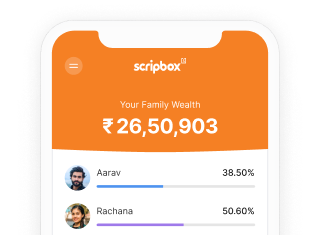Bonds are debt instruments in which the investor loans money to an entity. The entity borrows money at a fixed interest rate for a specific time duration. Such an entity can be the government, banks or corporations. Hence, when the government issues bonds, they are known as government bonds. Furthermore, these investments are known as fixed-income investments.
In this article, we have covered government bonds, their types, advantages, and disadvantages in detail.
How Government Bonds Work?
A government bond is a debt instrument issued by the central or state government of the country to finance its needs and regulate the money supply. When the government requires funds for infrastructure development and for financing government spending, such bonds are often the answer. Thus, the government will sell bonds to the public, inviting investments. The government will pay back the principal and interest as per the clauses mentioned in the bond at the specified maturity date. The government issues bonds under the supervision of the Reserve Bank of India (RBI).
Generally, Government bonds in India are long-term investment tools. These bonds are for a long duration, ranging from 5 years to 40 years. Also, government bonds fall under the broad category of government securities (G-secs). Both the central and state governments can issue government bonds. However, the bonds issued by state governments are also called State Development Loans(SDLs).
The Government of India (GOI) issues different variants of bonds. Also, these bonds cater to the diverse needs of the investor. The interest rate offered on the government bond is known as the coupon rate. The coupon can be either fixed or floating, disbursed on a semi-annual basis. Mostly, the GOI issues bonds that have fixed coupon rates in the market. For investors exploring how to invest in government bonds online, both central and state options are now easily accessible via digital platforms.
Types of Government Bonds
There are multiple government bonds types and the features of government bonds vary depending on their type:
1. Treasury Bills
Treasury bills, also known as T-bills, are short-term government bonds. They are issued for maturity within one year. The government issues these bonds in three categories, i.e. 91 days, 182 days and 364 days. The investors do not get coupon payments. However, the difference between the face value and the discounted value is the profit for the investors.
2. Cash Management Bills
These bonds are short-term securities and are highly flexible. They are issued as per the financing needs of the government. Hence, the tenure of the bond is mainly dependent on temporary cash needs. Usually, they must be less than 91 days. It is very similar to treasury bills.
3. Dated Government Securities
This type of bond comes with varying rates of interest. The investors will benefit from the interest paid on these bonds. Dated Government securities are termed “dated” owing to the element of the predetermined maturity date. The Reserve Bank of India auctions these bonds. The following are types of dated government securities.
a. Fixed-Rate Bonds
Government bonds of this nature have a fixed coupon rate throughout the tenure of the bond. In other words, the interest rate remains constant for the entire investment tenure irrespective of the fluctuating market rates.
b. Floating Rate Bonds
As the name suggests, the interest rate of these bonds keeps fluctuating during the investment. The interest rate changes are undertaken at intervals that are declared before the bond is issued.
For example, a floating rate bond (FRB) has a pre-announced interval of 6 months. It means that the interest rate would reset every six months throughout the tenure.
c. Zero-Coupon Bonds
As the name suggests, zero-coupon bonds have no coupon payments. The profits from these bonds arise from the difference between the issue price and the redemption value. In other words, these bonds are issued at a discount and redeemed at par.
d. Capital Index Bonds
The capital index bonds are those where the principal amount is linked to an accepted index of inflation. This bond is issued to protect the principal amount of investors from inflation.
e. Inflation-Indexed Bonds
The Inflation Index bonds (IIBs) are where the principal amount and the interest payment are linked to an inflation index. The inflation index may be the Consumer Price Index (CPI) or the Wholesale Price Index (WPI). Investments in such bonds ensure real returns that remain constant. Also, it can safeguard the investor’s portfolio against inflation rates.
f. Bonds with Call or Put Option
These bonds come with an option where the issuer has the right to buy back the bond (call option), or the investor can exercise its right to sell the bonds to the issuer (put option). The investor or the issuer can exercise the rights only after five years from the date of issue.
g. Special Securities
The Government of India issues special securities from time to time to entities like oil marketing companies, fertiliser companies, the Food Corporation of India, etc. The government issues these securities as compensation to these companies instead of cash subsidies.
h. STRIPS
STRIPS means Separate Trading of Registered Interest and Principal of Securities. Here, each cash flow of a fixed-rate bond is converted into an individual security. Next, they are traded in the secondary market. Also, they are very similar to zero-coupon bonds. However, they are created out of the existing securities.
i. Sovereign Gold Bonds (SGBs)
Sovereign Gold Bonds have their prices linked to the price of gold (commodity price). The Central Government issues SGBs where investors can purchase gold without the burden of investing in physical gold.
h. 7.75% GOI Savings Bond
The GOI savings bond was introduced in 2018 as a replacement for the 8% Savings bond. As mentioned in the nomenclature, the interest for this bond is 7.75%. As per the RBI regulations, these bonds can be held by:
- An individual or individuals who are not NRIs.
- A minor with a legal guardian representative.
- A Hindu Undivided Family.
The interest earned from these bonds is taxable under the Income Tax Act 1961 as per the investor’s income tax slab rates. Also, one can use Scripbox’s income tax calculator to calculate their income tax returns.
How to Buy Government Bonds in India?
Earlier, buying bonds in India was a time-consuming and complicated process. Investors had to choose from the limited options available with the broker. Also, physically submit signed documents to invest in bonds. Finally, the investor would receive a bond certificate or a digital bond in their demat account. This entire procedure took about a week. However, with digitalisation, government bond investment in India has become paperless, fast and convenient. The following are the ways to buy government bonds in India:
- Through a StockBroker: You can buy government bonds in India through a stockbroker, the same way you buy stocks.
- Through Mutual Funds: You can invest in government bonds through mutual funds.
- Through the Direct Platform: You can buy any government bond through the NSEGoBID Platform or RBI Retail Direct. The NSEgoBID platform can also be accessed through the NSEgoBID mobile app. After the bond is issued, it will reflect in your Demat account. Moreover, this facility is available to resident individuals only.
Advantages of investing in Government Bonds
The following are the benefits of investing in government bonds:
1. Risk-Free
Government bonds promise assured returns and stability of funds to investors. They have always been an example of risk-free security. Thus, investors looking for a risk-free investment, government bonds are suitable for them.
2. Returns
The returns from government bonds are generally as good as bank deposits. Also, there is a guarantee of principal along with fixed interest. Unlike bank deposits, these bonds are available for a longer duration.
3. Liquidity
One can buy and sell government bonds like equity instruments. The liquidity in these bonds is as adequate as banks and financial institutions.
4. Portfolio Diversification
Investment in government bonds makes a well-diversified portfolio for the investor. It mitigates the risk of the overall portfolio since government bonds are risk-free investments. This is one of the advantages of government bonds.
5. Regular Income
As per RBI guidelines, the interest accrued on government bonds shall be disbursed every six months to bondholders. Therefore, it provides an opportunity for the bondholders to earn regular income by investing their idle funds.
Disadvantages of Government Bonds
While secure, government bonds have a few limitations. It’s essential to understand government bonds’ risk and return before investing:
1. Low Returns
The yield or interest earned on government bonds is relatively lower in comparison to other investment options like equity , corporate bonds, FDs, gold etc.
2. Interest Rate Risk
Government bonds are long-term investment bonds where the maturity ranges from 5 years – 40 years. Hence, the bond might lose its value over this period. If inflation rises, the interest rate is less attractive. Also, the higher the bond period, the market risk also increases along with interest rate risk. Furthermore, the investor remains with an investment that is paying below the market value.
Who should invest in Government Bonds?
Government bonds are one of the safest investments in India. It is suitable for investors who have low risk tolerance as they prefer security in their investment. They also act as a long-term investment option for investors who do not have experience in investing in the stock market. Further, investors can purchase government bonds to dilute the overall market risk in the investment portfolio.
What are the different types of risks while investing in government bonds?
The following are the types of risks while investing in government bonds:
- Credit risk
- Inflation rate risk
- Interest rate risk
- Liquidity risk
- Reinvestment risk
- Market risk
Frequently Asked Questions
The government issues tax-free bonds to raise money from the public. One of the best examples of tax-free bonds is municipal bonds. As the name suggests, these bonds qualify for tax exemption under Section 10 of the Indian Income Tax Act, 1961.
State governments or local bodies issue Municipal bonds in India. The government uses these funds for socio-economic development through building schools, bridges, hospitals, etc.
- How Government Bonds Work?
- Types of Government Bonds
- How to Buy Government Bonds in India?
- Advantages of investing in Government Bonds
- Disadvantages of Government Bonds
- Who should invest in Government Bonds?
- What are the different types of risks while investing in government bonds?
- Frequently Asked Questions























Show comments